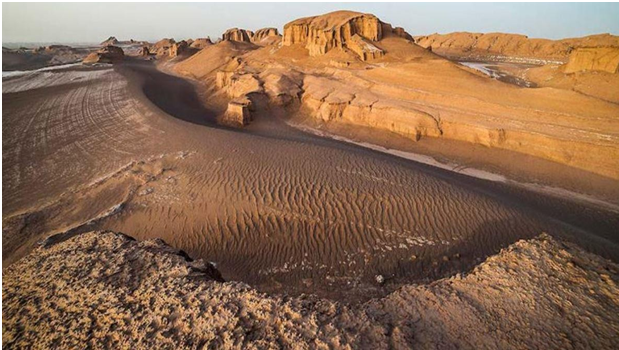Table of Contents
The Ultimate Guide to Kerman Tour Prices from Tehran
Kerman province is one of the tourist cities of Iran. The most important historical monuments and nature tourism in Kerman are registered by UNESCO. The most important ones are Lut Shahdad desert, Shahzadeh Mahan garden, Maymand village rock houses. In this article, we will examine each of them. Go with Banooye Kermani. Kerman tour price from Tehran vary based on itinerary and inclusions.
Kalout or Yardang

Lut Shahdad desert is located 110 km from the center of Kerman province. One of the most important places to see in the desert is Shahdad’s Kalout. Kalout have been formed over the years due to wind and water erosion. About 20,000 years ago, people lived in Lut Shahdad desert, and about 200 million years ago, it was completely under water here.
The price of Kerman tours from Tehran typically ranges between $500 and $800, depending on the tour package and inclusions.
Shahdad’s Kalout have wide ridges and yardangs are needle-shaped and cover approximately 5% of the total area of the land.
Keshit Gulbaf waterfall

Deep in the Lut desert, there is a flowing river that passes through the desert and created the Keshit waterfall. Keshit waterfall is located in Golbaf district of Kerman province.
roasted wheat or Gandom Beryan

One of the hottest places on the planet is Gandom Beryan, which has experienced temperatures of 70 degrees Celsius in the hot summer season.
The high temperature of the wheat region is due to the volcanic lava on the west side of the Lut desert, which covers a large area. The area of roasted wheat is 480 square kilometers.
Snake Tongue Valley of Lut desert
Deep in the Lut Desert and the Orange region is a valley called the Serpent’s Tongue. As the name of the valley suggests, it is similar to the tongue of a snake. Viewing aerial images is proof of this. It is not possible to travel to the orange and red areas of Lut desert without obtaining a permit, and you must travel in two-wheel drive cars.
Prince Mahan garden of Kerman or Shahzadeh garden

The 9th Iranian garden, Prince’s Garden, which has been registered as a World Heritage Site by UNESCO. This garden was built by a bad- tempered and insolent ruler named Abdul Hamid Mirza, the grandson of Naser al-Doulah. He used all the people of Kerman city to build this garden, he used all the orders of humans, plants, trees and animals.
The people of Mahan city were strongly against the construction of Prince’s Garden because it was located upstream of Mahan city and prevented the passage of water to Mahan. And they showed their opposition by muddying the water.
When Abdul Hamid Mirza died, the news of his death reached the residents and master workers of the garden, after that all the people present abandoned their work tools and ran away. For this reason, it is known as a half-finished garden.
One of the characteristics of the half-finished garden is the unfinished tile at the entrance of Prince’s Garden.
Other deserts of Iran, which are the most important touristic deserts, include the Maranjab desert of Kashan and the Varzaneh desert of Isfahan. Every year, many tourists from all over the world travel to these deserts and Lut Shahdad desert. Join BanooyeKermani and NadayeIsfahan website to check more and get travel information to Kerman and Isfahan.
Rock houses Meymand
One of the villages in Iran with an age of 12,000 years is called Meymand rock village, where life is still going on. The houses of this village were built in the heart of the rocks by local people who drank wine and hit axes on the rocks. The name Meymand is derived from May Drink.

